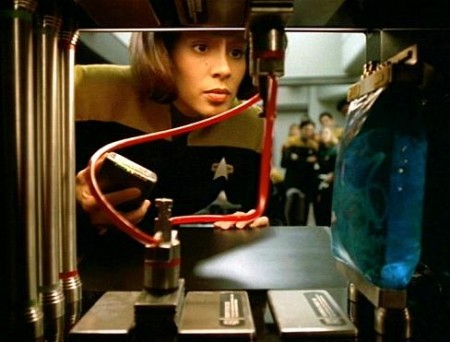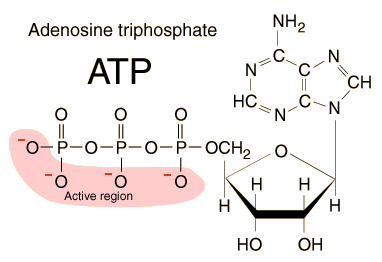March 2, 2016- In a paper presented to the Proceedings of the National Academy of Sciences of the United States of America, a team of researchers from European countries and Canada announced they had built a book-sized supercomputer powered by adenosine triphosphate (ATP). In other words a computer powered by a molecule present in living things.
What is the living function of ATP?
The “energy currency of life” according to biologists. ATP stores energy in our cells. Cells draw from the stored energy in ATP. When food is oxidized the ATP is replenished. And where do you find ATP? In the mitochondria which many biologists theorize is an organelle that in Earth’s past lived separately from modern cells but somehow was absorbed to become an essential energy generating machine in animal cells today.
Why a biological computer?
Because conventional electronic computers do problem solving sequentially. When you need more computing power than a single silicon processor, you put a whole bunch of them together to tackle a problem in parallel. That’s how IBM built Watson which in its Jeopardy iteration contained 2,880 processors. Computers of this size are not as energy intensive as the supercomputers used for climate modeling and the weather service, but compared to a biological computer, they are energy hogs. A biological computer gets its power from molecules in living cells. You can pack a lot of ATP into a small amount of physical space and as the writers of the paper appearing in Proceedings state, “this approach uses orders of magnitude less energy than conventional computers, thus addressing issues related to power consumption and heat dissipation.”
The components to build a biological computer are relatively cheap. ATP can be had at a negligible cost. Its energy requirements are self-contained. The form factor is so small you can pack a lot of computing power into something book-sized. And it solves computational problems in parallel just like IBM Watson.
How does it compare to quantum computers?
Instead of qubits, the biological computer uses proteins powered by ATP. The researchers describe the physical appearance of a circuit as looking “a bit like a road map of a busy and very organized city as seen from a plane.”
How much energy does a biological computer consume?
Less than 1% of the energy used by an electronic transistor. Building supercomputers from biological circuits would contribute mightily to energy conservation, an important issue in the fight to reduce our energy dependence on fossil fuels.
How do you build a biological computer?
The researchers manufactured their device using electron-beam lithography at a nanoscale with the material coming from bovine serum albumin (a cow). They experimented with actin filaments and micro tubules and found that computational error rates were far lower with the former than the latter. They accounted for the computational errors because of fabrication problems caused by not working in a clean room environment. The plan going forward is to incorporate the highest standards of clean room facility for future fabrication.
What are the next challenges?
As in most new technology experiments coming from a laboratory, scaling the device is the remaining challenge. To compete with electronic computers the developers will have to replicate the design on mass or have the actin filaments self replicate. In other words teach the circuit to build itself. All this is doable so it shouldn’t be too long before we see biological-based circuits and possibly a hybrid that blends biology and silicon-based transistors.
Is life imitating art with the publishing of a paper on biological computing?
Absolutely. Where have you seen biological computers in the past? Look no further than an episode of Star Trek Voyager where the ship’s bio-neural technology (see the blue gel pack in the picture below) becomes infected and an induced fever is used to cure it. USS Voyager‘s science-fiction based organic computer consisted of massive number of neural fibers similar to the actin filaments of our real biological computer. The power source isn’t mentioned although we know Star Trek used antimatter and warp technology. But life indeed is eerily resembling art.










